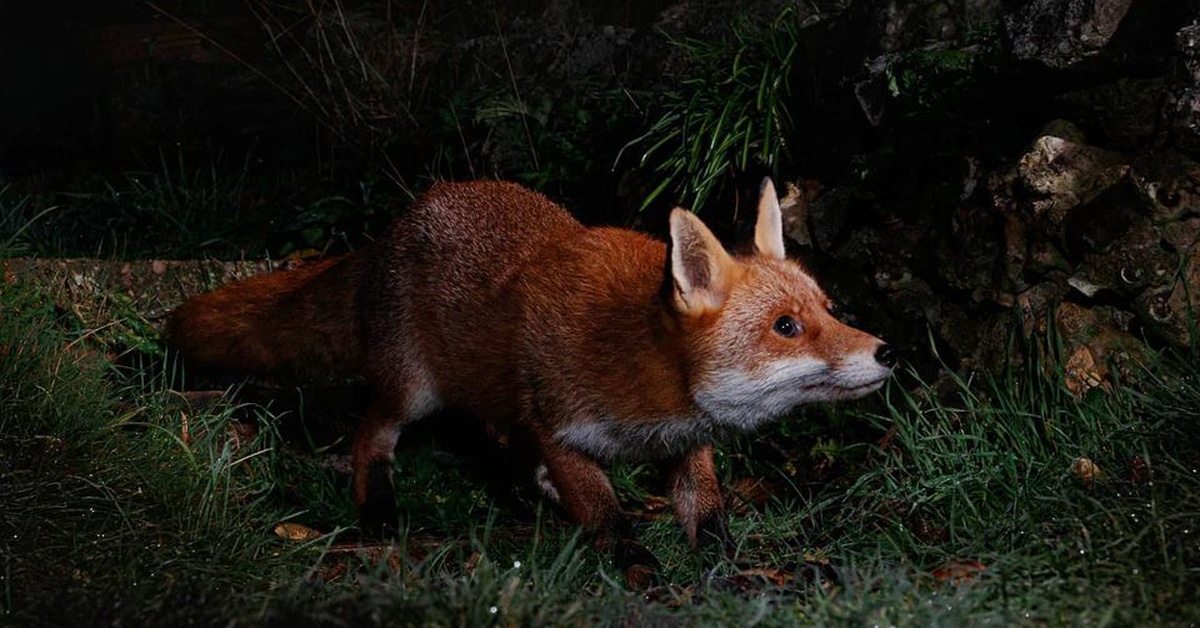Are Foxes Nocturnal?
Foxes are remarkable creatures with distinct behavioral and visual traits. They are unique due to their living, hunting, and feeding habits. Generally, they are not seen during the daytime. If they visit you in your garden, all you will see are footprints and some leftover food. Considering this, you may naturally wonder: are foxes nocturnal?
Nowadays, there are 23 different species of fox found all across the world. These little animals adapt swiftly to new settings, and their living habits and dietary patterns are often influenced by their adaptations. Their unique traits enable them to be outstanding hunters and also to stay safe from predators. Follow the article, and let’s find out the answer to the question “Are foxes nocturnal?”
What Is Nocturnal Behavior?
When animals are active at night and sleep during the day, this is referred to as nocturnal behavior. Examples of nocturnal animals are coyotes, owls, rats, hedgehogs, leopards, and some species of insects.
Nocturnal species have highly developed hearing, smell, and uniquely good vision. Nocturnal animals usually have eyes that can adjust to low and high light. Some creatures are both nocturnal and diurnal, such as cats and ferrets.
However, some creatures, like bushbabies and bats, only come out at night. Animals typically have larger-sized eyes in order to adjust to the darkness of the night. Research shows that their eye cornea is also larger in comparison to others.
Biology Of Foxes
To learn whether are foxes nocturnal or not, let’s start with their biology. True foxes (genus Vulpes) include twelve species. Generally, foxes are omnivorous mammals that belong to the family of Canidae. They are characterized by a flat skull, pointy ears, an upturned snout, and a pointed nose. However, they tend to be identified by their bushy tails.
Foxes are found on every continent except Antarctica. Those gorgeous animals are one of the most widespread creatures. The red fox is considered the leading species of fox and comes with 47 subspecies. Foxes have a significant part in many cultures because of their smartness, slyness, and habits.
It’s important to note that foxes are omnivorous eaters. They eat mainly small animals, birds, fish, insects, reptiles, and even scavenge on carcasses. They are often seen scouring the garbage from the trash cans too. However, they also enjoy vegetation such as apples, berries, tubers, acorns, tomatoes, and others. In general, they prefer to eat meat. Still, when they are especially hungry or when they crave water, foxes eat the plants.
Perhaps unsurprisingly, foxes can be the victims of larger animals such as wolves and bears. If the predator is close, some fox families will call and warn others about the threat.
Those amazing animals have a highly adaptable nature and can live in different situations. They are even found in the Sahara desert and the Arctic regions too. They are very opportunistic and truly are master hunters. Their activity hours greatly affect hunting success. Therefore, there is still the question of are foxes nocturnal.
Reasons Of Why Are Foxes Nocturnal
There is a popular myth regarding the thought of are foxes nocturnal truly? According to this myth, foxes do not come out unless they get injured, rabid, or sick. Even though this can happen, it is still wrong. Foxes will come out for various other reasons, especially during the mating months. If we carefully observe their habits, we can pinpoint some key aspects of why they may or may not be nocturnal.
And still, are foxes nocturnal? Well, most fox species are nocturnal, but many of them are not. Their night activity is mostly determined by the habitat and outer environment. Normally, foxes are solitary animals and are hidden during daylight hours. This is also to avoid predators and humans. However, with the effect of urban development, foxes started to change their behaviors.
Nocturnal nature is mainly determined by a few things. The most important ones are habitat and prey type. The habitat strongly affects the nocturnal nature. For example, desert foxes can not stay out during the day because of the ridiculously high temperatures. However, some foxes are not nocturnal and tend to have more crepuscular traits.
Foxes come out and get active when their prey comes out because in this situation they have a higher chance of successful hunting. So, if the victim is active during the night, the foxes follow their schedule.
Advantages of Foxes Being Nocturnal
A nocturnal lifestyle can come with a good number of advantages. The first and main one is avoiding predators. If they do not come out during the day and are hidden, the predators will not be able to spot them easily.
Foxes that live in urban settings tend to be nocturnal. In this case, they are adapted to the human activities around them. They have experience of being safer at night when humans are asleep. However, sometimes they have no fear of people and can barely be seen outside.
Another benefit of being nocturnal is that it makes it easier to hunt. Foxes, in particular, are great hunters and can stealthily move around in the dark without being detected. In addition to that, the competition in hunting is not as big as it is during the day.
All this is thanks to their incredible hearing and sense of smell. When the fox detects the victim, it can feel their exact location. Fox hearing is so developed that they can even hear the mouth squeak from 100 feet away. In addition to that, they can even hear the prey movement underground, so it is simple for them to spot the prey and dig them out of the soil. Foxes can see objects that move quickly but have trouble noticing the ones that stay still.
Crepuscular Behavior Of Foxes
“Crepuscular behavior” of animals means that they are more active during the day or dusk. Those creatures sleep mainly at night and are hidden during the day, trying to lay low. However, they mostly hunt during the twilight hours. Some fox species can be fully nocturnal, and still, some are more crepuscular. There is a difference between crepuscular and nocturnal animals. Crepuscular is active in the twilight hours when nocturnals come out at night.
If the prey of the specific fox is active in the twilight hours, then the fox will come out during this time, which raises the chance of catching the prey. In addition to that, humans can also affect whether the fox is nocturnal or crepuscular due to disturbance. Those amazing animals perfectly learned and managed to adapt their habits and behaviors to increase their comfort and survival chances.
Are Foxes Nocturnal Or Diurnal Mainly?
The diurnal lifestyle of animals is mainly characterized by their being active during the day and mainly sleeping at night. Some examples of species that have diurnal behavior are humans, deer, and dogs. Are foxes nocturnal or diurnal? Well, it turns out that some foxes may not be nocturnal at all. Even though the majority of these amazing animals are active at night, there are some exceptions to this rule too.
For example, Tibetan foxes prefer to come out during the day. This is determined by their prey – Plateau Pikas. Plateau Pikas are small mammals that are common in the Tibetan Plateau and are one of the most important meals for foxes. Those small animals are diurnal and are out mostly during the day. So, the Tibetan foxes adjusted their schedule according to them.
Unlike the Tibetan foxes, Arctic foxes tend to be both nocturnal and diurnal. They can be seen out at any time. The reason for this is that they eat whatever they find. Foxes adjust their schedule according to the lemmings, which are considered to be their main food source.
Most of the time, foxes can be seen out in the light during the mating season. They mainly roam around in search of mates. In addition to that, when fox babies are half-grown, they tend to be more energetic and active. So, seeing them during the day playing around and running can be normal.
The Channel Island fox is a diurnal species. They are mainly active during the day. They are living separately from the people on the island. Because there aren’t many animals that can prey on them, Channel Island foxes feel safe to go wherever they want. They come out to hunt during the day, and the peak of their presence is around dawn or dusk.
Gray foxes are strictly nocturnal. However, these species have become so not because of their preferences but because of environmental pressure.
Bottom Line – Are Foxes Nocturnal?
As you can see, the answer to the question of are foxes nocturnal is not straightforward and specific. Foxes are mainly active during the night or at dawn. Regardless of species, if foxes are too hungry, they can also hunt during the day.
Some species tend to be more nocturnal and some that are more diurnal. The truth is that foxes can be seen in daylight and can be diurnal if there is a need for food, if it is mating season, or if the outer environment forces them to do so.

Nato is a content writer and researcher with a background in psychology who’s eager to explore the wonders of nature. As a travel enthusiast and animal lover, she hopes to inspire others to discover and cherish the beauty and importance of the natural world.







